4th Joint Laboratory Seminar on Rehabilitation Engineering and Assistive Technology, October 19, 2022
Information
4th Joint Laboratory Seminar on Rehabilitation Engineering and Assistive Technology
Neural Electronic Engineering Laboratory
Division of Biomedical Engineering for Health and Welfare
Graduate School of Biomedical Engineering
Tohoku University
Sendai, Japan
Biocybernetics Laboratory
Department of Biomedical Engineering
Institut Teknologi Sepuluh Nopember (ITS)
Surabaya, Indonesia
Schedule:
Date: October 21, 2022
Time: 13.00 Surabaya /15.00 Sendai
Venue: Online (Zoom Meeting)
Presentation list:
Sukma Firdaus, Achmad Arifin, Fatdiansyah
Development of Embedded Computer Vision Method to Extract Percentage of Eye Close (Perclos) for a Safety Driving System
Tomoki Kondo, Takashi Watanabe
A Feasibility Study on FES Control of Underhand Throwing Motion in Seated Position: Analysis of EMG and Throwing Motion, and Stimulation Test
Aminy Widinal Hartiningrum, Achmad Arifin
A Detection System for Center of Pressure Change and Lower Extremity Kinematics During Pregnancy for Welfare Design Recommendation of Pregnant Women
Yuta Matsumoto, Takashi Watanabe
A Basic Study on Gait Pattern Classification Using LSTM Based on Inertial Sensor Signals
Development of Embedded Computer Vision Method to Extract Percentage of Eye Close (Perclos) for a Safety Driving System
Sukma Firdaus‡, Achmad Arifin*‡, Fatdiansyah
‡ Graduate Program of Electrical Engineering Department
Institut Teknologi Sepuluh Nopember, Surabaya, Indonesia
* Biomedical Engineering Department
Institut Teknologi Sepuluh Nopember, Surabaya, Indonesia
S.I.S AutoService, Martapura, Indonesia
Abstract
Various factors can cause accidents, but the main factor that dominates the causes of accidents is the driver’s actions, especially continuing to drive in a state of drowsiness. To avoid accidents, a safety driving system is needed to inform the driver if he is in a drowsiness condition. An electronic system to assist in safety driving has been developed in our research group. The system is designed as a decision support that detecting drowsiness of driver by assesing fisiological data eye closing. This report describes the early stages of developing a safety driving system implemented in an embedded computer vision method. Percentage of eye close (Perclos) was calculated from eye ascpect ratio (EAR) from eye landmark. The system has been tested in detecting drowsiness more than 3 hours. Significant results obtaind from the perclos when the driver had driven for 3 hours. The average perclos for 3 hours is 0.152, while after more than 3 hours driving is 0.590. This result is significant in distinguishing the driver’s condition, and it will be integrated with other signal modalities in developing rules for a safety driving system.
A Feasibility Study on FES Control of Underhand Throwing Motion in Seated Position: Analysis of EMG and Throwing Motion, and Stimulation Test
Tomoki Kondo*, Takashi Watanabe**
* Graduate School of Engineering, Tohoku University, Japan
** Graduate School of Biomedical Engineering, Tohoku University, Japan
Abstract
Patients with stroke or SCI aim to restore motor function and prevent functional decline through rehabilitation. However, conventional rehabilitation can cause patients to lose motivation due to the repetition of monotonous movements. Participation in sports for the disabled is suitable for rehabilitation due to its effects on motor function recovery and self-efficacy and is expected to increase motivation due to its competitiveness. However, for persons with paralysis, disability can be a barrier to sports participation. Therefore, the purpose of this study is to control underhand throwing motion to support sports participation of persons with disabilities using functional electrical stimulation (FES). First, voluntary underhand throwing motion was performed in two different ways: without windup and with windup. Windup is a movement in which the upper limb is more extended backward than the relaxed arm position. The distance of the ball, muscle activity, and movement of the upper limb were measured, and the results were compared. Then, based on the results, electrical stimulation was applied to the upper limb in three different ways, and the movements were compared. From these results, it was inferred that developing a coordinated movement utilizing the extensor muscles is important for developing an underhand throwing motion by FES.
A Detection System for Center of Pressure Change and Lower Extremity Kinematics During Pregnancy for Welfare Design Recommendation of Pregnant Women
Aminy Widinal Hartiningrum, Achmad Arifin
Biomedical Engineering Department, Institut Teknologi Sepuluh Nopember, Surabaya, Indonesia
Abstract
Since human feet bears body weight, they play a crucial role in daily life activities. The increase in joint load as a result of an increase in body mass during pregnancy will certainly affect the postural balance and walking balance of pregnant women. Therefore, a system with pressure sensor and accelerometer-gyroscope combined sensor computed by the STM32F10C8T6 microcontroller displayed data on a Personal Computer (PC) via Bluetooth communication. The results showed that the imitate gait of pregnant women compared to a normal gait had center of pressure (COP) position tending to the medial-anterior direction with a more diffuse COP deviation, decreased flexion and increased extension of the knee joint, and decreased plantarflexion and dorsiflexion of ankle joint. Recommendations from this study showed that pregnant women were more comfortable when using slippers footwear designs and the need for supporting cushions on the lower extremities when sitting/sleeping positions.
A Basic Study on Gait Pattern Classification Using LSTM Based on Inertial Sensor Signals
Yuta Matsumoto*, Takashi Watanabe**
* Graduate School of Biomedical Engineering, Tohoku University, Japan
** Graduate School of Biomedical Engineering, Tohoku University, Sendai, Japan
Abstract
An important part of the rehabilitation of hemiplegic patients with gait disorders is to develop an appropriate rehabilitation strategy for each individual. In developing a rehabilitation strategy, it is important to determine the nature of each abnormal gait. In this study, clustering of gait patterns (healthy gaits, circumduction gait, and steppage gait) using IMU and long-short term memory (LSTM) was tested. In our previous study, a method for detecting abnormal gait based on the prediction error by the model that predicts future gait data from current gait data using LSTM was proposed. The prediction error represents the difference between the reference gait and the abnormal gait, if the LSTM is trained using reference gait data. In this study, gait classification by grouping these prediction errors using a clustering method was tested. By changing the LSTM training data, the number of dimensions of the prediction error, and the clustering method, a total of eight different models were created. As a result, three of the eight models achieved better than 90% accuracy. The data for a clustering are the prediction errors transformed from the acceleration and angular velocity data acquired from the right foot IMU. This transformation was done using the LSTM model used in the previous study. However, all models showed most of the misclassifications were for hemiplegic gait. This suggests that the models may not be able to cope when the number of types of hemiplegic gait increases in the future.
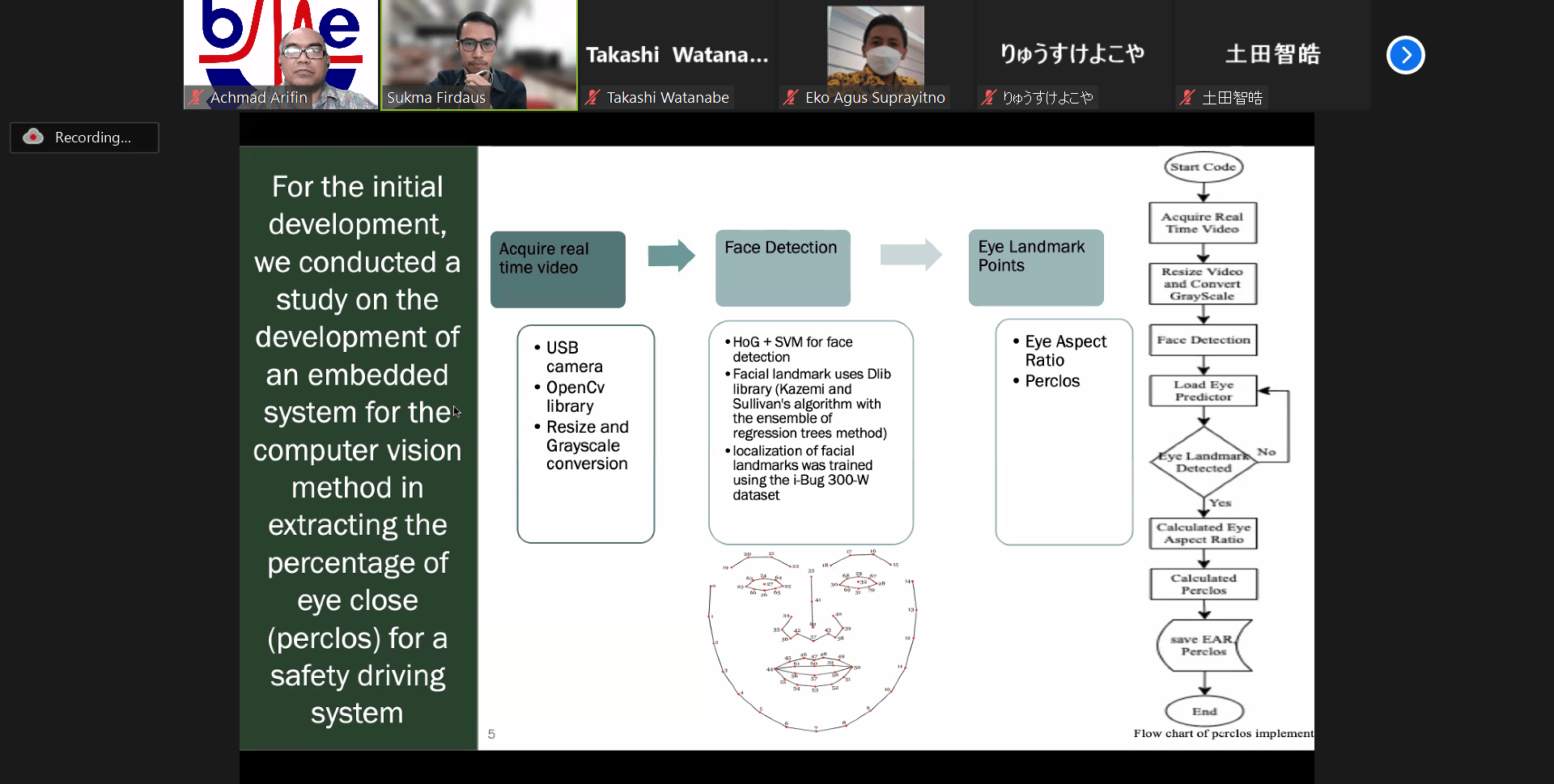
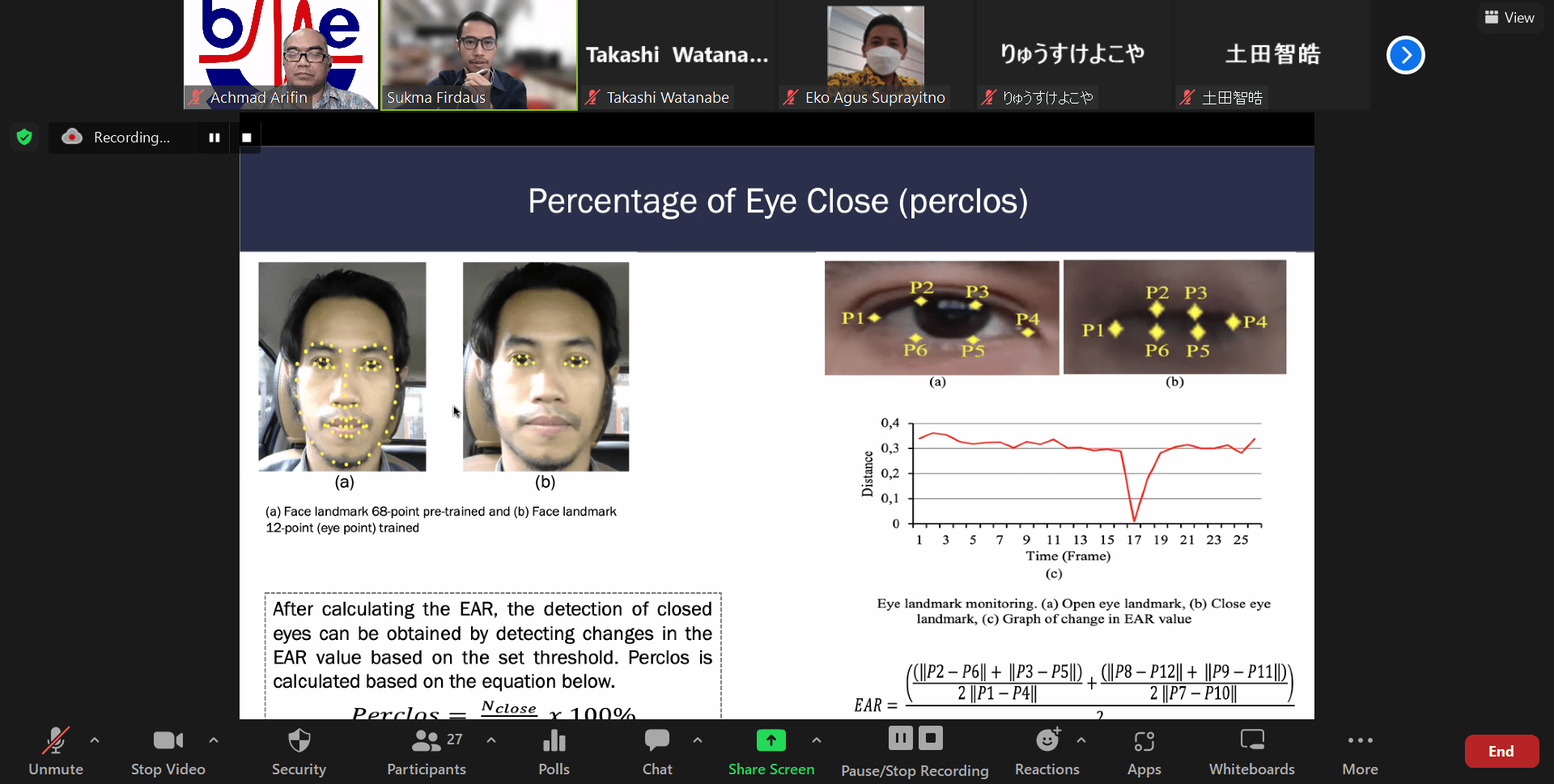
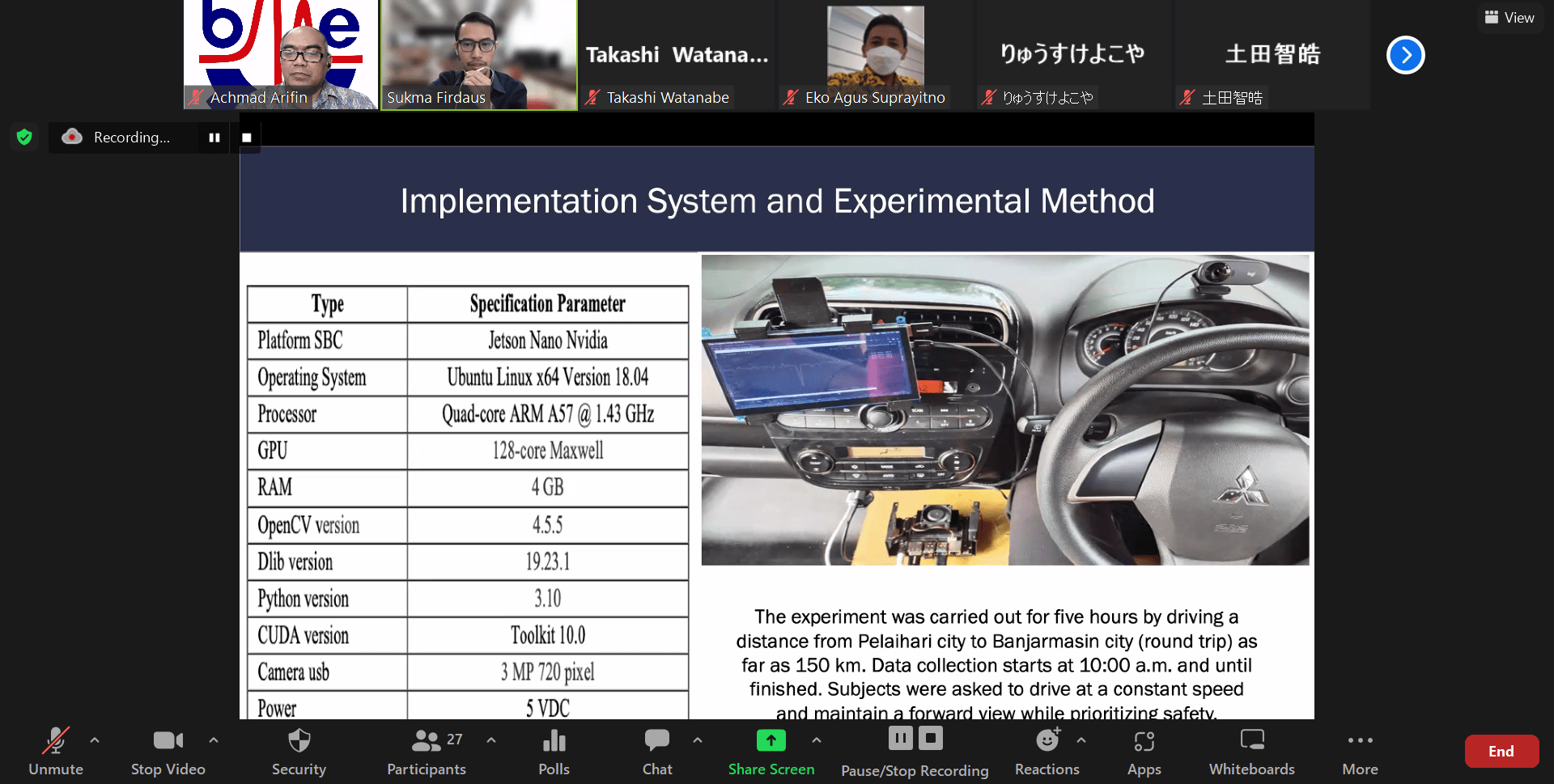
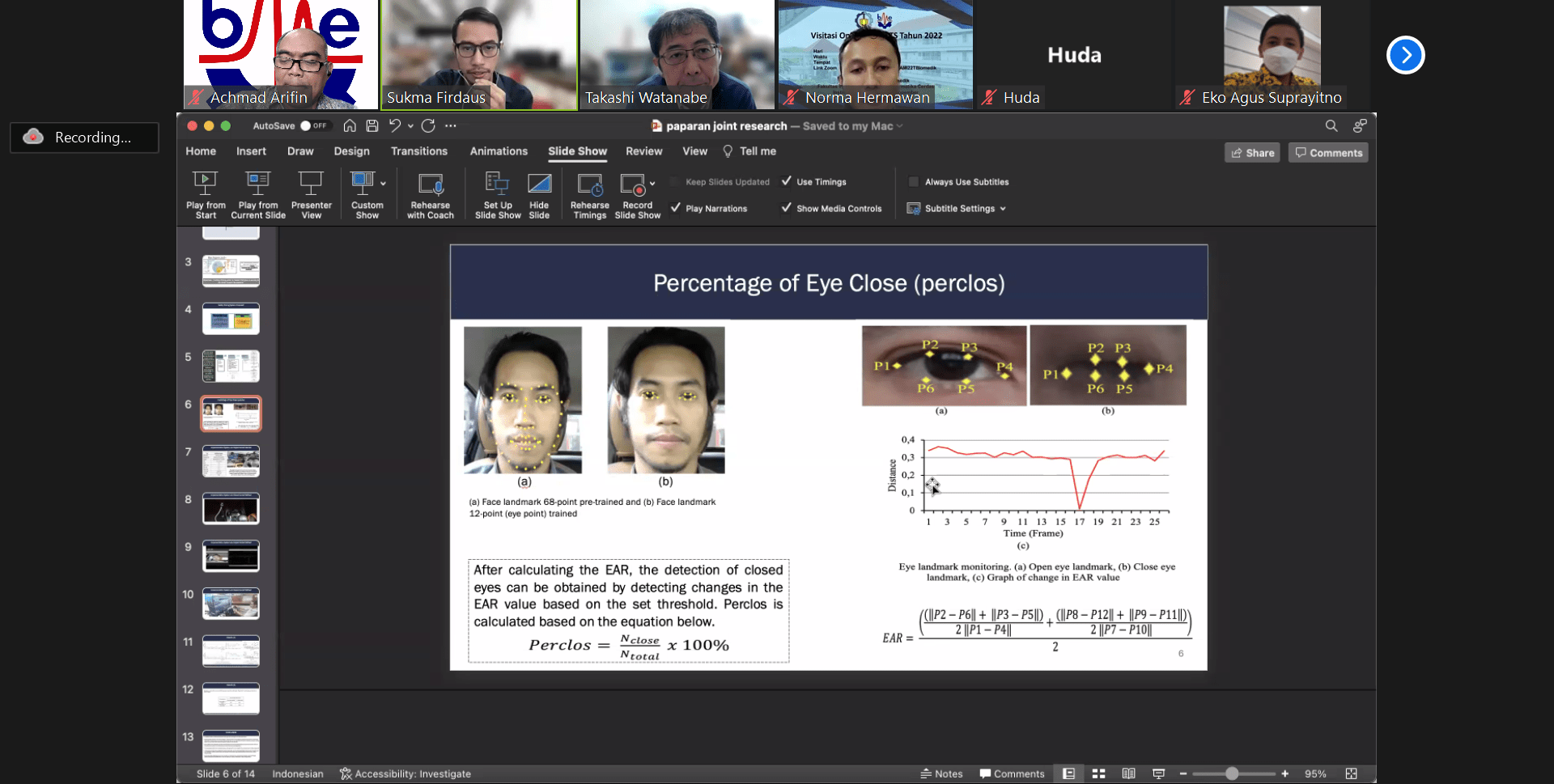
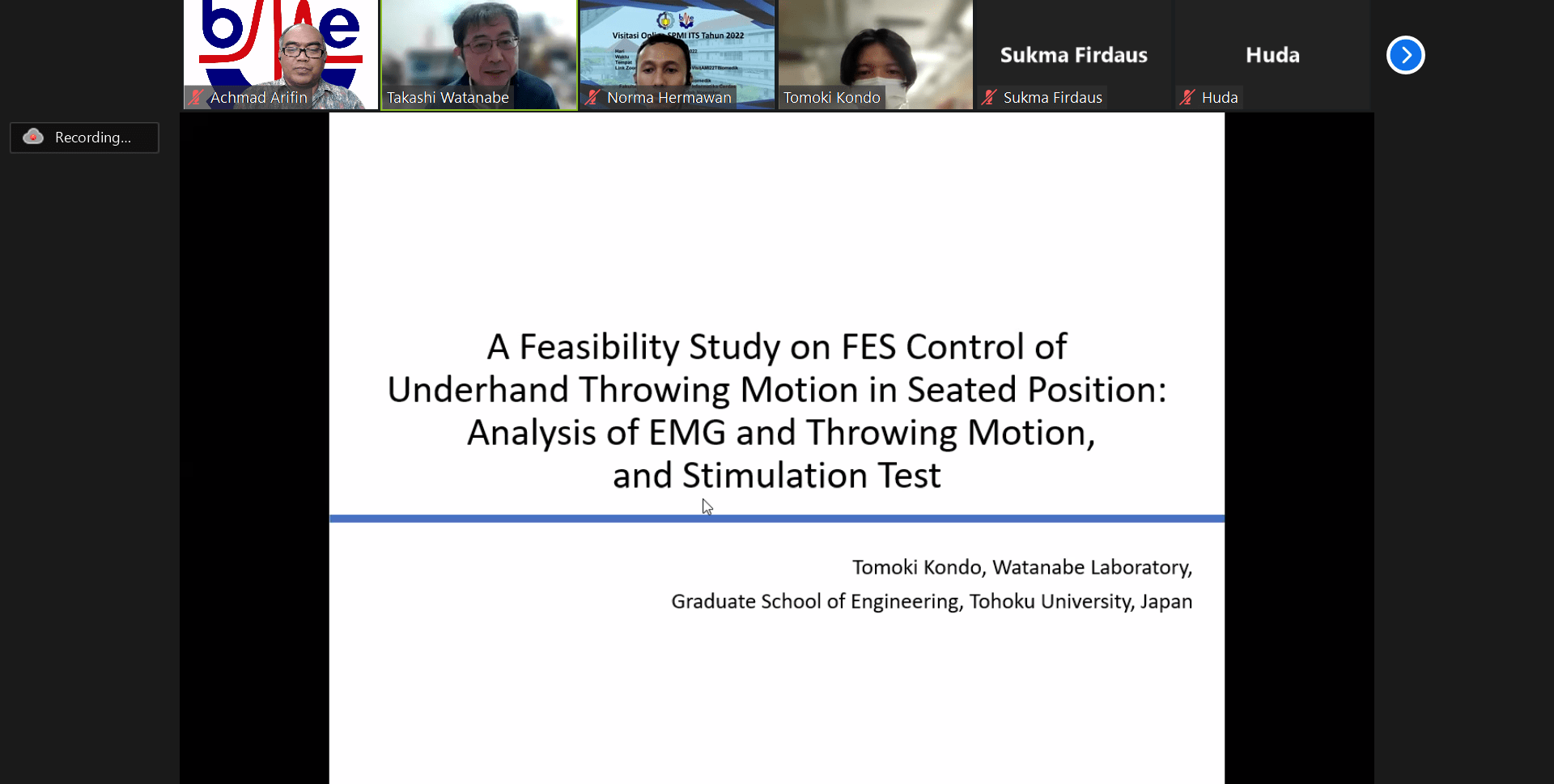
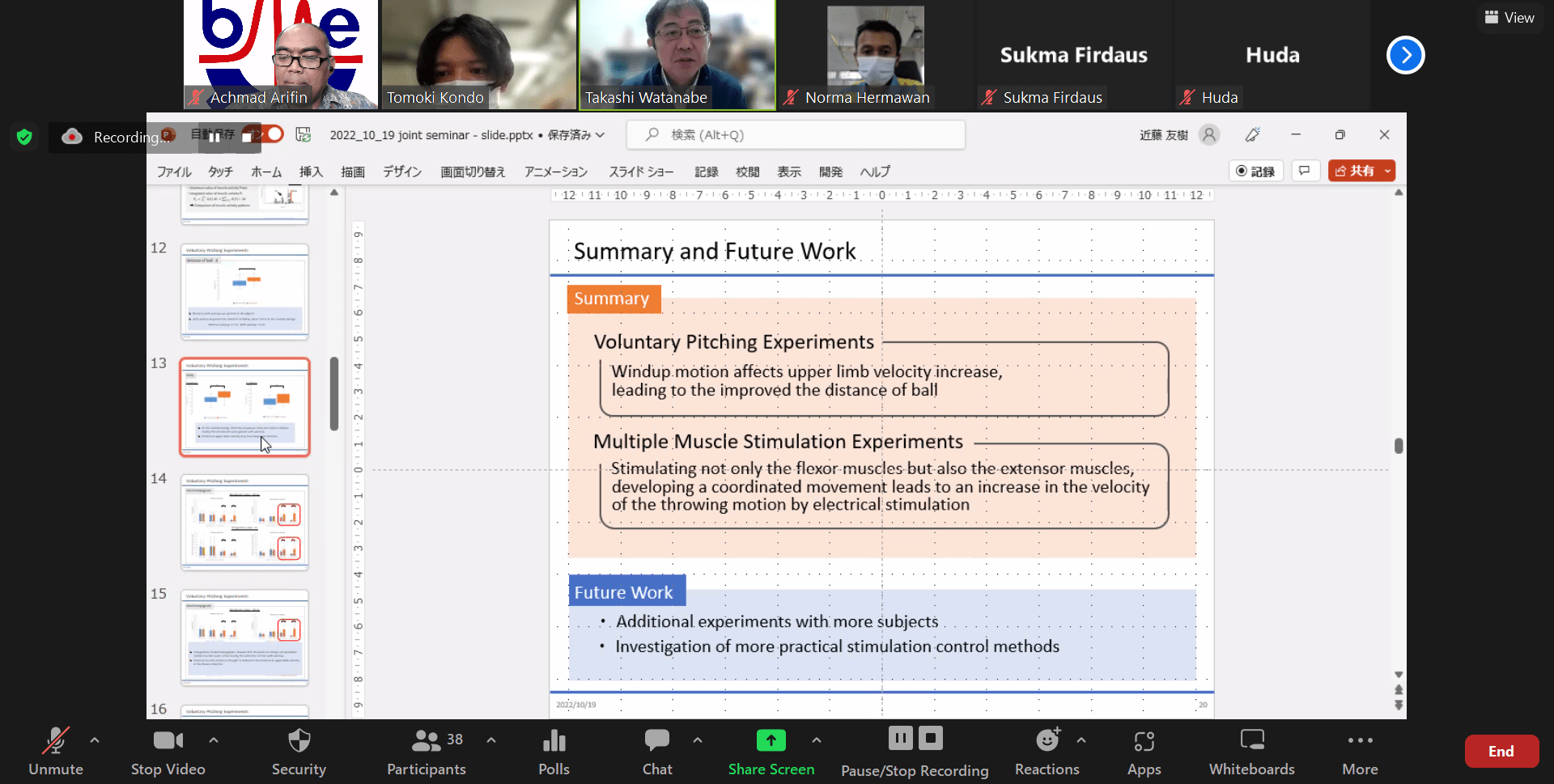
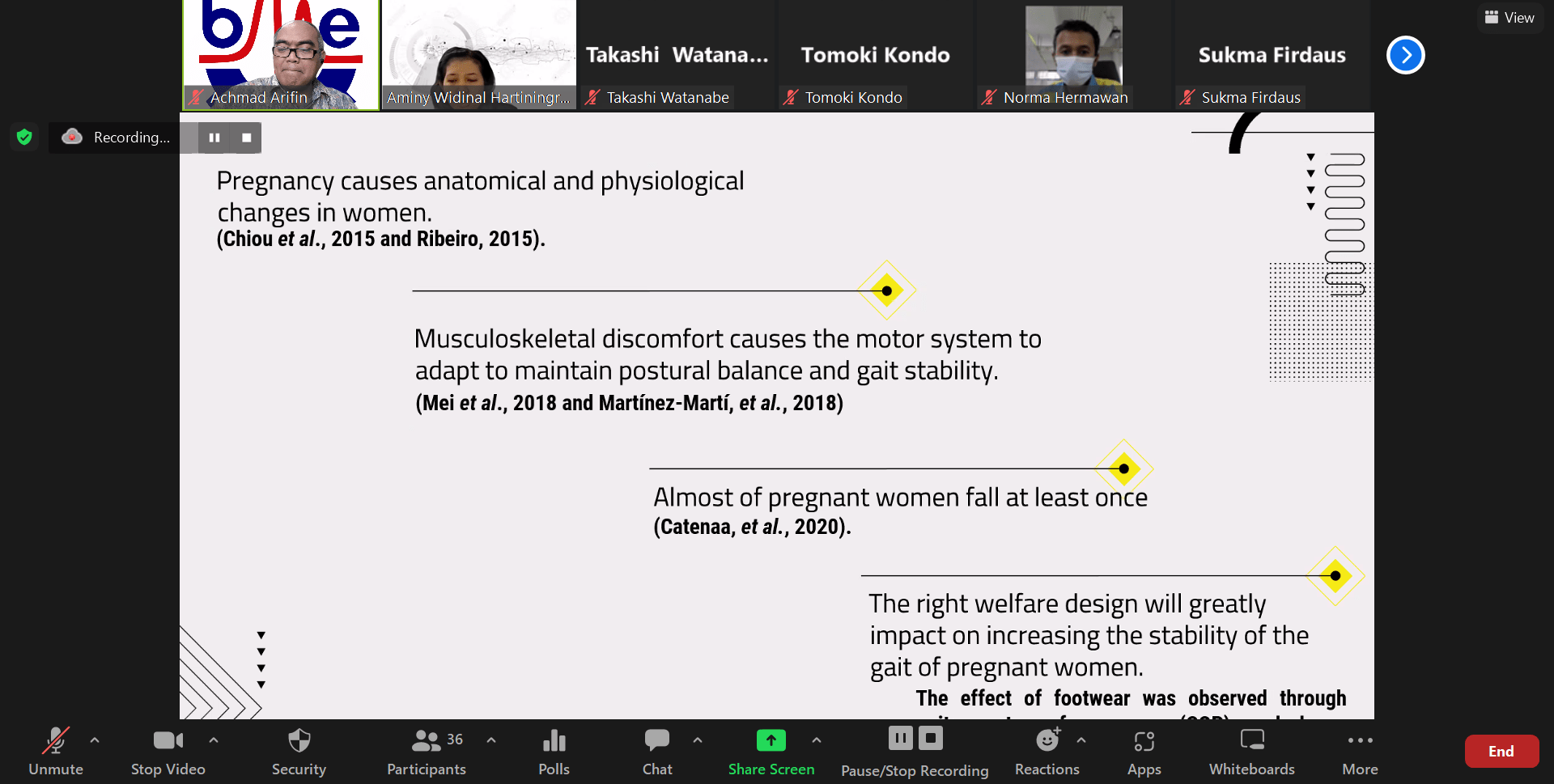

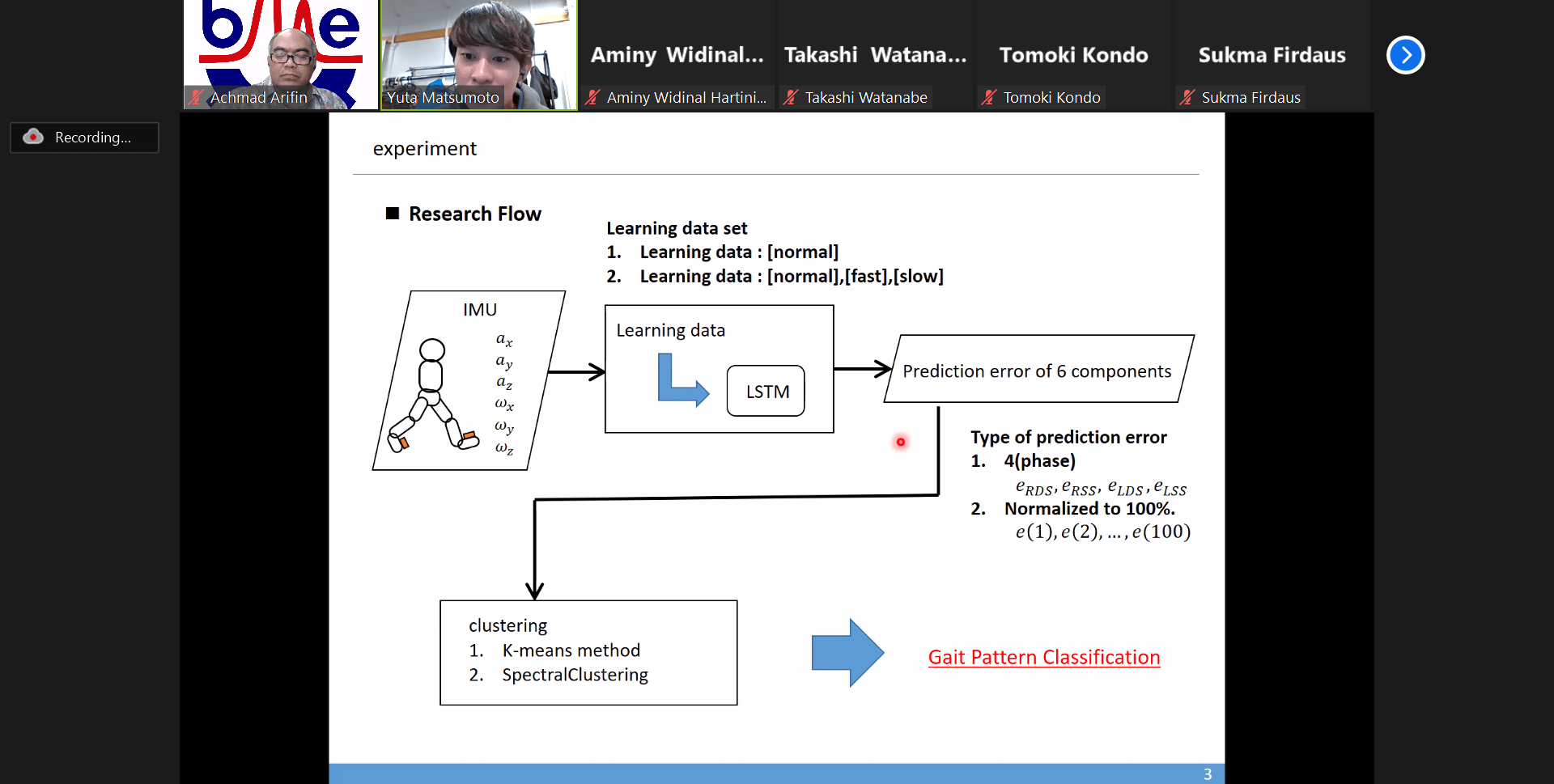
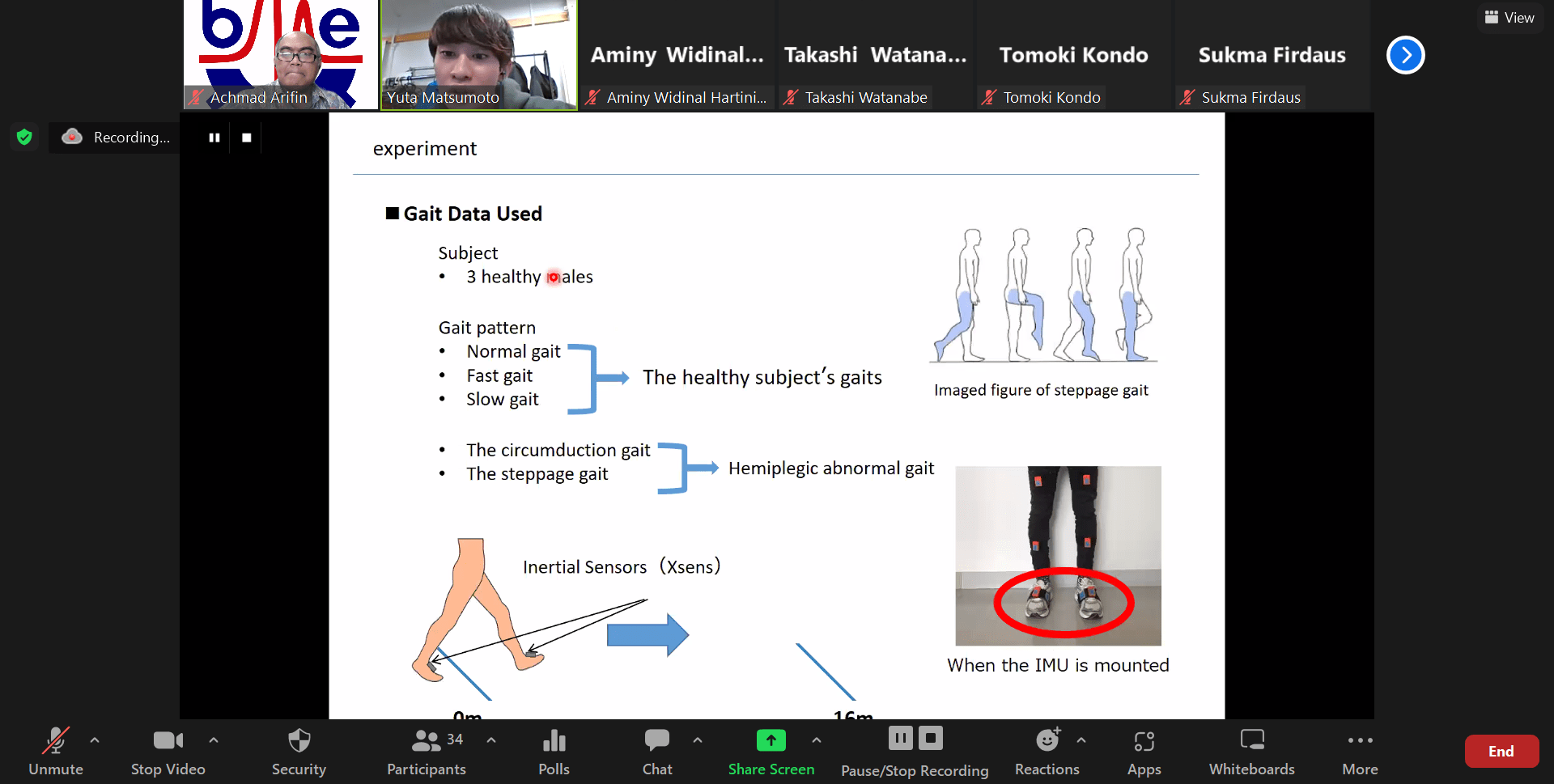
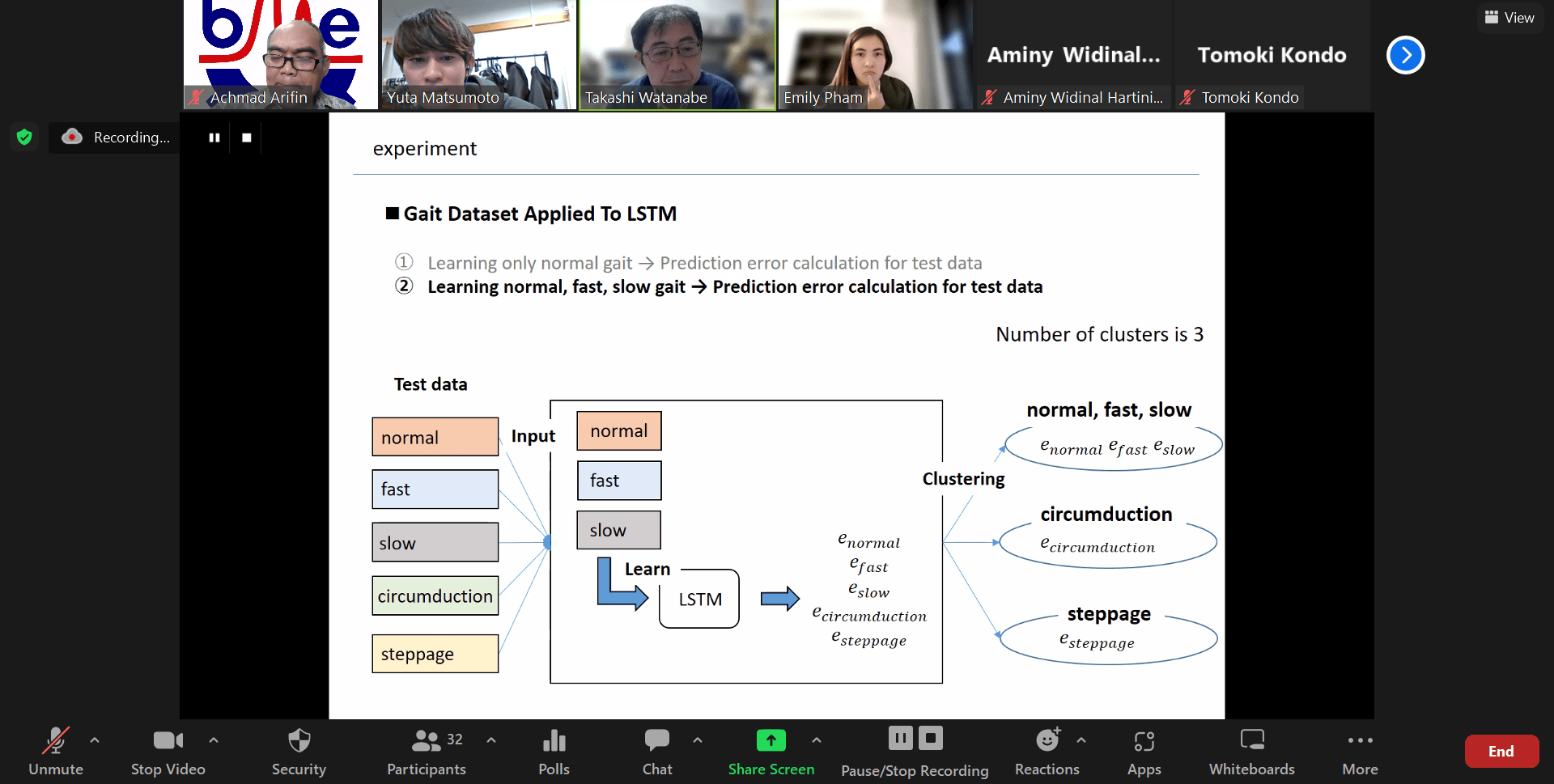
Latest News
-
4th Joint Laboratory Seminar on Rehabilitation Engineering and Assistive Technology, October 19, 2022
4th Joint Laboratory Seminar on Rehabilitation Engineering and Assistive Technology Neural Electronic Engineering Laboratory Division of Biomedical Engineering for
-
3rd Joint Laboratory Seminar on Rehabilitation Engineering and Assistive Technology, September 21, 2022
3rd Joint Laboratory Seminar on Rehabilitation Engineering and Assistive Technology Neural Electronic Engineering Laboratory Division of Biomedical Engineering for
-
Policy of Development on Rehabilitation Engineering, April 30, 2022
National and Institutional Policies of Rehabilitation Indonesian Government all Indonesian Citizens and Residences as a mandate of the





